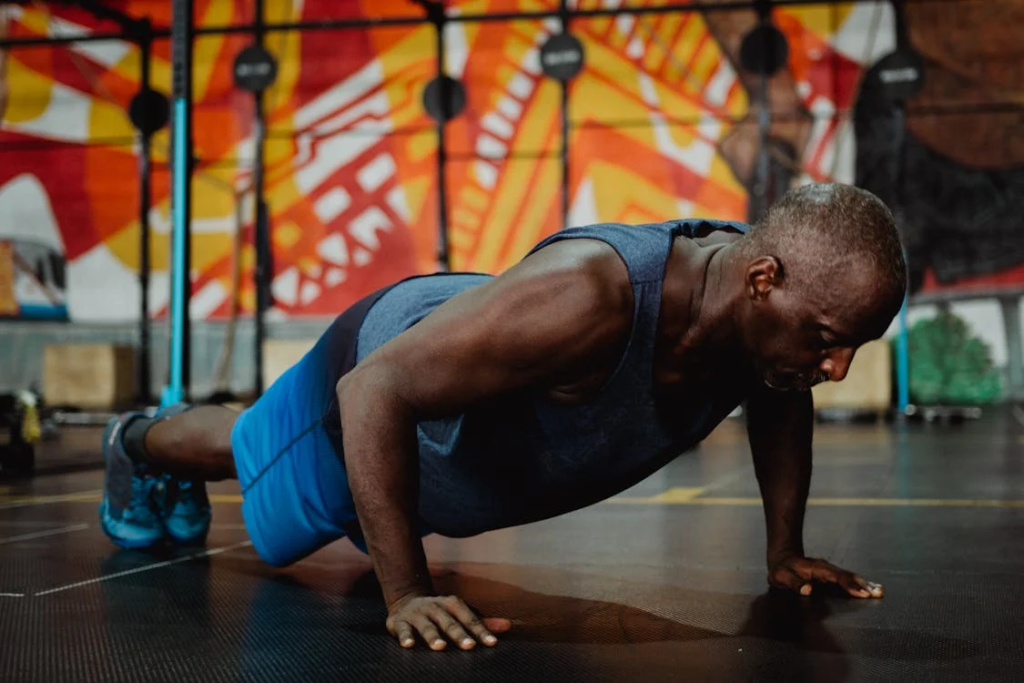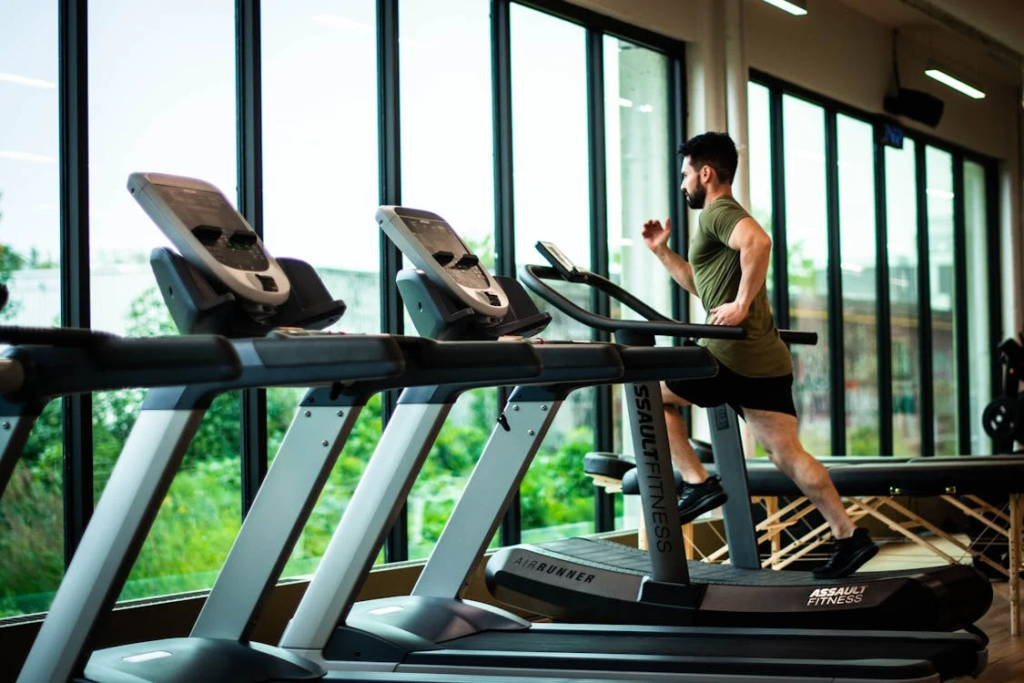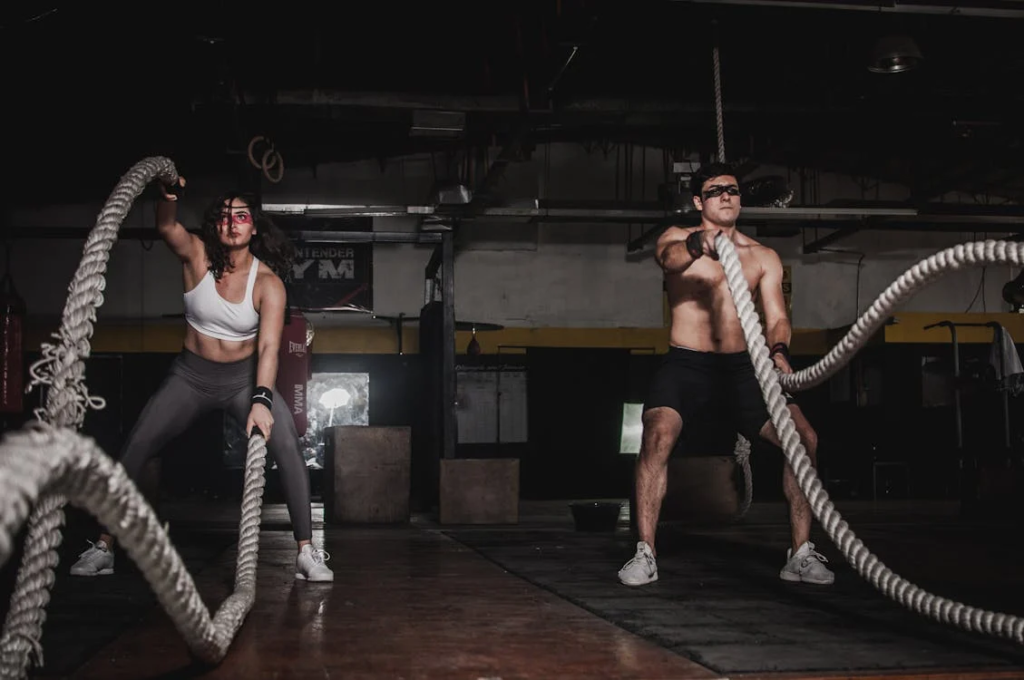Let’s talk cardio! If you’re looking to get fit, you’ve probably heard about the power of cardiovascular exercise. They’re fantastic for burning calories, boosting your mood, and keeping your heart healthy. But with so many options out there, how do you pick the right one for your goals?
Meet High-Intensity Interval Training (HIIT) and Low-Intensity Steady State (LISS) cardio—two popular cardio styles that can help you reach your fitness dreams. HIIT is all about short bursts of intense exercise followed by quick breaks, while LISS keeps things steady and relaxed for a longer period. In this blog, we’ll explore HIIT vs. LISS to help you figure out which workout might be your best friend for weight loss and overall fitness.
Understanding HIIT and LISS
What is HIIT?
High-Intensity Interval Training, or HIIT, is a popular workout method that alternates between short bursts of intense exercise and brief periods of rest or lower-intensity activity. This approach is designed to push your body to its limits in a short amount of time, making it an efficient way to burn calories and improve cardiovascular fitness. HIIT workouts can include a variety of exercises, such as sprinting, cycling, or bodyweight movements, and they can be tailored to fit different fitness levels.

Typical Structure of a HIIT Workout
A typical HIIT workout consists of several intervals, often structured as follows:
- Warm-Up: 5-10 minutes of light cardio to prepare your body.
- High-Intensity Intervals: 20-30 seconds of maximum effort (e.g., sprinting, jumping jacks).
- Rest or Low-Intensity Recovery: 10-30 seconds of rest or low-intensity activity (e.g., walking or slow jogging).
- Repeat: This cycle is usually repeated for 15-30 minutes, depending on your fitness level and goals.
- Cool Down: 5-10 minutes of stretching or light activity to help your body recover.
What is LISS?
Low-Intensity Steady State (LISS) cardio, also known as steady state cardio or slow cardio, is a form of exercise that involves maintaining a steady, moderate level of intensity for an extended period. Unlike HIIT, LISS focuses on longer durations of activity at a lower intensity, making it accessible for people of all fitness levels. Common LISS activities include walking, jogging, cycling, or swimming at a comfortable pace. This type of cardio is great for building endurance and promoting fat burning without putting too much strain on the body.

Typical Structure of a LISS Workout
A typical LISS workout might look like this:
- Warm-Up: 5-10 minutes of light movement to prepare your body.
- Steady-State Activity: 30-60 minutes of continuous exercise at a moderate intensity (e.g., brisk walking, easy cycling).
- Cool Down: 5-10 minutes of stretching or light activity to help your body recover.
Both HIIT and LISS offer unique benefits, and understanding their structures can help you choose the right approach for your fitness goals!
HIIT vs. LISS for Weight Loss
HIIT for Fat Loss
High-Intensity Interval Training (HIIT) is a powerhouse when it comes to fat loss. The key to its effectiveness lies in the intense bursts of activity that elevate your heart rate and boost your metabolism. During a HIIT workout, your body burns calories not only during the exercise but also afterward, thanks to a phenomenon called excess post-exercise oxygen consumption (EPOC). This means you continue to burn calories even after you’ve finished your workout! Additionally, HIIT workouts can help preserve lean body mass while promoting fat loss, making it a great option for those looking to slim down without sacrificing strength.
Studies Supporting HIIT’s Effectiveness for Weight Loss
Numerous studies have shown that HIIT can be more effective for fat loss compared to traditional steady-state cardio. For example, a study published in the Journal of Obesity found that participants who engaged in HIIT lost significantly more body fat over a 12-week period compared to those who performed moderate-intensity exercise. Another research study in the British Journal of Sports Medicine indicated that HIIT not only helps reduce body fat but also improves overall fitness levels in a shorter amount of time. These findings highlight HIIT as a time-efficient and effective method for achieving weight loss goals.
LISS for Fat Loss
Low-Intensity Steady State (LISS) cardio offers a different approach to fat loss. By maintaining a steady, moderate level of intensity over a longer duration, LISS promotes fat burning without overwhelming your body. This makes it an excellent choice for those who may be new to exercise or prefer a gentler workout. LISS is also easier to recover from, allowing you to incorporate it into your routine more frequently. Moreover, because LISS can be sustained for longer periods, it can lead to significant calorie expenditure, contributing to overall fat loss.
Studies Supporting LISS’s Effectiveness for Weight Loss
Research supports the effectiveness of LISS for weight loss as well. A study published in the Journal of Sports Sciencesfound that participants who engaged in LISS over a 12-week period experienced significant reductions in body fat percentage. Another study in the International Journal of Obesity showed that LISS can be just as effective for fat loss as higher-intensity workouts when performed consistently. These studies suggest that LISS can be a valuable tool for those looking to lose weight, especially when combined with a balanced diet and regular exercise.
So, when it comes to HIIT vs. LISS for fat loss, both methods have their merits. The choice between them often depends on individual preferences and fitness levels. Many people find success by incorporating both HIIT vs. low intensity cardio into their routines for a balanced approach to fat loss.
HIIT vs. LISS for Fitness Goals
HIIT for Endurance
High-Intensity Interval Training (HIIT) is not just about burning calories; it’s also a fantastic way to boost your cardiovascular endurance. By pushing your heart rate to its maximum during intense intervals, HIIT trains your heart and lungs to work more efficiently. This can lead to improved oxygen uptake and better overall cardiovascular health. Studies have shown that HIIT can enhance your aerobic capacity in a shorter amount of time compared to traditional steady-state cardio. This means you can achieve significant endurance gains without spending hours in the gym!

Comparison with LISS Regarding Endurance Training
While HIIT is effective for building endurance quickly, Low-Intensity Steady State (LISS) cardio also plays a crucial role in endurance training. LISS allows you to maintain a steady pace for an extended period, which helps build a strong aerobic base. However, when considering HIIT vs. LISS for endurance, HIIT can lead to faster improvements due to the intensity of the workouts. For those looking to maximize their endurance gains, a combination of both HIIT and LISS can be beneficial. Incorporating HIIT sessions into your routine can help you build speed and power, while LISS can enhance your stamina and recovery.
LISS for Endurance
Low-Intensity Steady State (LISS) cardio is excellent for gradually building endurance. By engaging in activities like walking, jogging, or cycling at a moderate pace for longer durations, you train your body to utilize oxygen more efficiently. This steady approach helps strengthen your heart and lungs, allowing you to sustain physical activity for extended periods. Over time, LISS can significantly improve your endurance levels, making it easier to perform daily activities and participate in more intense workouts.
Ideal Scenarios for Incorporating LISS into Fitness Routines
LISS is perfect for various situations, such as:
- Recovery Days: On days when you want to give your body a break from high-intensity workouts, LISS can keep you active without overexerting yourself.
- Long Workouts: If you have more time to dedicate to exercise, LISS allows you to enjoy longer sessions that can be both relaxing and beneficial for endurance.
- Weight Loss Goals: LISS can be an excellent addition to a weight loss plan, as it helps burn calories while being easier on the joints.
Incorporating LISS into your fitness routine can complement your HIIT workouts, providing a balanced approach to building endurance and overall fitness.
HIIT vs. LISS for Heart Health
Both High-Intensity Interval Training (HIIT) and Low-Intensity Steady State (LISS) cardio can have significant positive effects on heart health, but they do so in different ways. HIIT is known for its ability to improve cardiovascular fitness quickly by pushing your heart rate to higher levels during intense intervals. This can lead to improved heart efficiency and increased stroke volume, meaning your heart pumps more blood with each beat. On the other hand, LISS promotes heart health by providing a steady, moderate workout that can be sustained for longer periods. This helps strengthen the heart muscle and improve overall cardiovascular endurance without putting too much strain on the body.
Recommendations for Heart Health Considerations
When considering HIIT vs. LISS for heart health, it’s essential to find a balance between the two. For those with existing heart conditions or concerns, consulting a healthcare professional before starting any new exercise program is crucial. Generally, incorporating both types of workouts into your routine can provide comprehensive benefits. Aim for at least 150 minutes of moderate-intensity exercise (like LISS) or 75 minutes of vigorous-intensity exercise (like HIIT) each week, as recommended by health organizations. Listening to your body and allowing for adequate recovery is also vital for maintaining heart health.
HIIT vs. LISS for Blood Pressure
Both HIIT and LISS can positively impact blood pressure levels. Research shows that regular aerobic exercise, including both forms of cardio, can help lower blood pressure in individuals with hypertension. HIIT has been found to reduce systolic and diastolic blood pressure effectively, often producing more significant reductions in a shorter time frame compared to traditional steady-state cardio. LISS, while slightly less intense, is also effective in promoting lower blood pressure by improving cardiovascular health and enhancing blood flow.
Which is Better for Managing Blood Pressure?
When it comes to managing blood pressure, both HIIT and LISS have their advantages. HIIT may offer quicker results due to its intensity, making it a great option for those looking to make fast progress. However, LISS is easier on the joints and can be sustained for longer periods, making it a suitable choice for individuals who may be new to exercise or have certain health concerns. Ultimately, the best approach may be to incorporate both HIIT and LISS into your fitness routine to reap the benefits of each while keeping your workouts varied and enjoyable.
Read More: How to Reduce Blood Pressure
Choosing the Right Cardio for You
When deciding between HIIT and LISS, there are several important factors to consider:
- Personal Fitness Level: Your current fitness level plays a significant role in determining which type of cardio is best for you. If you’re new to exercise, starting with LISS may be more manageable, allowing your body to adapt gradually. On the other hand, if you’re already fit and looking for a challenge, HIIT can push your limits and help you achieve faster results.
- Goals: Consider what you want to achieve with your workouts. If your primary goal is weight loss, both HIIT and LISS can be effective, but HIIT may offer quicker results. For building endurance or improving heart health, incorporating both types of workouts can provide a balanced approach.
- Time Availability and Workout Preferences: Think about how much time you can dedicate to your workouts. HIIT sessions are typically shorter but more intense, making them great for busy schedules. If you prefer longer, more relaxed workouts, LISS might be the better fit. Ultimately, choose a workout style that you enjoy, as this will help you stay consistent.
Combining HIIT and LISS
Combining HIIT and LISS into your fitness routine can provide a range of benefits. By incorporating both styles, you can enjoy the advantages of each: the quick calorie burn and cardiovascular improvements from HIIT, along with the endurance-building and recovery benefits of LISS. This balanced approach can help prevent workout boredom, reduce the risk of injury, and keep your body challenged in different ways.
Sample Workout Plan Combining HIIT and LISS
Here’s a simple weekly workout plan that combines HIIT and LISS:
- Monday: HIIT Workout (20-30 minutes)
- Warm-up: 5 minutes of light cardio
- 30 seconds of sprinting, followed by 30 seconds of walking (repeat for 15-20 minutes)
- Cool down: 5 minutes of stretching
- Tuesday: LISS Workout (30-60 minutes)
- Brisk walking or cycling at a steady pace
- Wednesday: Rest or light activity (e.g., yoga or stretching)
- Thursday: HIIT Workout (20-30 minutes)
- Warm-up: 5 minutes of light cardio
- 20 seconds of jumping jacks, followed by 40 seconds of rest (repeat for 15-20 minutes)
- Cool down: 5 minutes of stretching
- Friday: LISS Workout (30-60 minutes)
- Swimming or jogging at a comfortable pace
- Saturday: Optional HIIT or LISS session based on your energy levels and preferences
- Sunday: Rest and recovery
By mixing HIIT and LISS, you can create a well-rounded fitness routine that keeps you motivated and helps you achieve your health goals!
Choosing between HIIT and LISS ultimately comes down to your individual fitness goals, preferences, and lifestyle. If you’re looking for quick results and enjoy intense workouts, HIIT might be the way to go. It’s efficient and can lead to significant improvements in both fat loss and cardiovascular endurance in a short amount of time. On the other hand, if you prefer a more steady approach that allows for longer workout sessions and easier recovery, LISS could be your best bet. It’s gentle on the body and great for building endurance over time.
Remember, there’s no one-size-fits-all answer when it comes to HIIT vs. LISS cardio. The best workout is one that you enjoy and can stick with consistently. Take some time to assess your fitness needs, experiment with both HIIT and LISS, and see how your body responds. Whether you choose high-intensity intervals or low-intensity steady state cardio, the key is to stay consistent and listen to your body. Both methods can effectively improve your cardiovascular health, burn fat, and enhance your overall fitness level.
The difference between HIIT and cardio like LISS lies in their intensity and duration, but both can play a crucial role in a well-rounded exercise routine. Some people find that alternating between HIIT and LISS throughout the week keeps their workouts interesting and allows for better recovery. Remember, the best LISS cardio activities are those that you enjoy and can maintain for longer periods, while the most effective HIIT workouts are those that challenge you without overwhelming your system.



